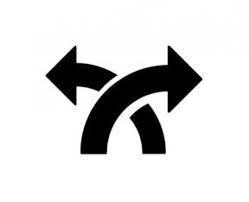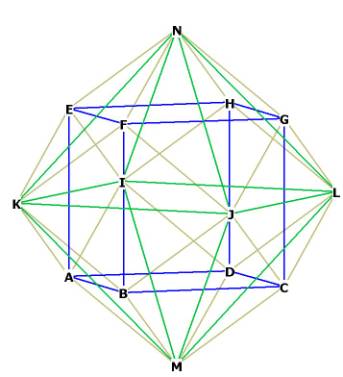|
(2019
midterm assignment) Model Midterm answers 2019 (Index) Essay 2: Start Research Report |
 |
Eileen Burnett
March 28, 2019
It’s a Brave New World: Eco
fiction in the 21st century
Most people, when tending to their
lawns, choose very carefully when tending to the issue of weeds and other pesky
garden nuisances. Dandelions are immediately dealt with, dollar weeds
eradicated, and the various mushrooms and tree funguses are doused with the
appropriate poison so as to leave a clean, well-manicured lawn. But what of what
lies beneath the surface? What are we doing to the trees and grasses and bushes
by removing the very foundation of their existence, the ever pervasive yet
critically important mycelial dominion that acts like a neural network for the
plants that we cultivate so carefully? Could it result in the complete
disintegration of plant life as we know it? And could we, as a result of this
ignorance, be responsible for the death of that which cleans our air and
provides oxygen for us to breathe? Such is an example of a scenario brought
forth in what is known as Eco fiction, a branch of fiction that delves into the
myriad of possibilities resulting from humanity’s pervasive, and often
catastrophic influence on the environment around us. Described ”as
an art that alludes to an all-important yet obscure reality to which we must
learn to attend” (Tabas, 2015), eco fiction utilizes intense imagery that
subverts our need for stability, exploring scenarios that deal with
environmental criticism to bring forth a deeper regard for the world around us
by tapping into humanity’s collective and deep-seeded fears regarding extreme
change.
The main way in which these images are
achieved is through the cross-cultural symbol of the garden where life began.
Many stories utilize this imagery to create a sense of nostalgia within the
reader, an image of a place that existed long ago, and likewise a place where we
can hope to one day return. Playing off this nostalgia, authors such as H.G.
Wells reel their audience in by diametrically opposing such Eden-like gardens to
those of our own current landscapes, creating a type of longing for such a
utopian balance in our own world. Of this new earth in the year 802,701 AD,
Wells paints a beautiful picture: “Here and there rose a white or silvery figure
in the waste garden of the earth… there were no hedges, no signs of proprietary
rights, no evidences of agriculture; the whole earth had become a garden” (28).
This garden seemed to be the pinnacle of existence for the new inhabitants of
the earth, a utopian society of fruitarians, living in harmony with nature as
our creation stories often describe. However beautiful the paradise, however,
there is always a catch, and it came in the form of the Morlocks. These
creatures, evolved from what once were the working-class people of the earth,
preyed upon the Eloi, descendants of the upper-class humans, who inhabited the
garden. Wells draws this parallel, between the perceived paradise and the harsh
reality quite literally beneath it to make a very direct point: that there is
always a price to pay for the ideal. The price in this instance was the life of
the Eloi, who served as meat for the Morlocks, who bred them like lambs for the
slaughter, serving as a reminder that we are but one cog in the machine of the
earth. Unsettling as it is, the fact that people could change so drastically
even in the midst of such beauty is a possibility that Wells makes quite real,
showing that it would not take much for humanity to lose itself if we are not
careful.
Unsettling images of trees and gardens
show up in other works of literature as well. In Octavia Butler’s
Parable of the Sower, the very hope
for a garden is carried within the pockets of the main character, Lauren, whose
purpose and mission within this ravaged ecosystem is to find refuge so that
mankind might once again rebuild. Her journey through a scorched earth is laden
with hopes for a nature that once was, evident through the numerous packets of
seeds she carries with her throughout her journey. These seeds represent hope,
contrasting the bleak and lifeless California desert to the lush landscapes of
her dreams, represented by her new religion, Earthseed. In this story, however,
the ecological viewpoint is that of the parched earth, crying out for water that
never comes. Lauren seeks for a place of refuge, a place to begin her garden so
that life might one day return to the planet. This message is also ecological in
nature, for though there is no direct reason for this dystopian scenario to
exist, Butler implies that it is because of our meddling into weather
modification that the earth no longer functions properly. Once again, it is the
lack of good stewardship that results in the destruction of the environment,
causing all of humanity to suffer as a consequence.
Gardens and trees are not the only ways
in which Eco fiction reaches into our subconscious fears. Daphne du Maurier’s
short story, “The Birds”, is a prime example of just how unsettling a shift in
the natural order can be. The story centers around a family in what is
presumably England, whose father notices a change in the way that the birds of
the area begin acting. As though influenced to insanity by the electromagnetic
pull of the moon, “there was some law the birds obeyed, and it had to do with
the east wind and the tide…the birds attacked with the flood tide” (74). The
story goes on to describe, in great detail, the ultimate horror experienced by
this family as they try to make sense of- and survive- a complete deviation from
the way that birds normally behave. Not much more can be as unsettling as the
idea that something as innocuous as birds, something part of the everyday
landscape, part of the rhythm of the earth, could behave so erratically as to go
crazy at high tide and murder every human they can get to.
These deviances from the norm—these
unsettling accounts of how nature can reverse in its predictable pattern to
create a sense of instability, horror, and dread—are at the center of these
stories of eco fiction, reminding us of the fragility of our existence. Stories
like The Time Machine, Parable of the
Sower, and “The Birds”, through carefully playing on our fears, serve to
further an agenda that is invested in bringing about awareness as to what the
state of our environment is in and just how important it is to be involved in
making it a place that is habitable for our future generations. Perhaps the
world can be made into a better place if we would all consider the implications
of our behaviors on the people around us as well as our environment. Or perhaps
we will just be better people for having read these kinds of thought-provoking
stories.
Works Cited
Butler, O. (1993). Parable of the Sower.
Grand Central.
du Maurier, D. (1971). The Birds. In J. Stadler, Eco-Fiction (pp. 59-84).
Pocket Books.
Tabas, B. (2015). Dark Places : Ecology, Place, and the Metaphysics of Horror
Fiction. Miranda, 11(11). Retrieved from
https://journals.openedition.org/miranda/7012
Wells, H. (2003). The Time Machine and The Invisible Man. Barnes and
Noble.
 |
 |
 |
